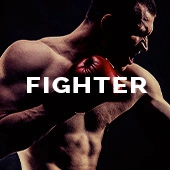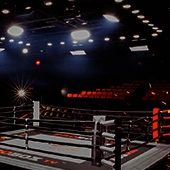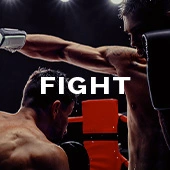By Cliff Rold
According to the reports originating with Yahoo’s Kevin Iole and verified by others, the best made fight of 2016 was far from its biggest.
If Bob Arum is telling the truth about Manny Pacquiao’s numbers against Jessie Vargas (a claim of around 300,000 buys), it wasn’t even the biggest fight of the month.
Serious fight fans marked their calendars with anticipation for the light heavyweight showdown between titlist Sergey Kovalev and former super middleweight champion Andre Ward. They gave us a solid show and an ending that erupted in a social media war of words between the majority who felt Kovalev had done enough to win and those who edged it to Ward.
It turns out the number of serious fight fans might not be that big of a deal. The approximately 160,000 buys being reported is troubling.
It might be the latest sign of the erosion of US public trust in the sport.
One could spin the numbers for a more optimistic outlook. Kovalev-Ward did wind up being on a bad date on the calendar. Pay-per-view is a star driven enterprise. Right now, only three active fighters have any sort of long standing pay-per-view foundation: Manny Pacquiao, Canelo Alvarez, and Miguel Cotto.
Alvarez’s sales and gate attendance this year suggest he has finally ascended to be boxing’s biggest star. Even diminished from his prime, and with some market fatigue, Pacquiao remains the most recognizable active name in boxing. Fans who didn’t want to double dip on their cable bill and opting for the show that came first makes some sense.
Having a UFC show in the month didn’t help either. People can parse the differences between MMA and boxing all they want; they still draw from some of the same pool of fans. That the biggest star in all of fight sports right now, Conor McGregor, headlined the UFC show meant even more attention from the available market.
All of this is true yet it doesn’t negate other trends in the market. Since the Floyd Mayweather-Manny Pacquiao fight crushed every sales and revenue record (even adjusted for inflation) in boxing history, not a single show has hit the vaunted one million buy mark. BoxingScene Managing Editor Steve Kim has written quite a bit about the cloud that mega-event has cast over the sport.
There is truth in that. Why it’s true is subject for debate; here’s one take.
Mayweather-Pacquiao was, in the ring, a disappointment. The disappointment had been negatively mythologized into a reality that didn’t occur in the ring. Disappointing is not the same as a bad fight. It wasn’t. It had some moments of intrigue and an excellent defensive performance from Mayweather.
The problem wasn’t that it was bad. The problem was that it wasn’t great; it was ordinary. After a five-year build, with that many people watching, and a high price tag, boxing needed a great night from it’s two biggest names. As a star driven enterprise, when the biggest stars can’t meet they hype, it begs the question why anyone would trust the hype for fighters they aren’t as familiar with.
“These guys are the new pound for pound guys? Yeah…we remember the last time we heard that…”
Mayweather-Pacquiao didn’t happen in a vacuum. Boxing’s betrayal of the public trust in big events has been a too regular occurrence for a generation: the robberies in Pernell Whitaker-Julio Cesar Chavez and Lennox Lewis-Evander Holyfield I; the bite fight; corruption so bad in the Olympics that the sport was driven out of prime time, just to name a few instances.
Believe it or not, Mayweather and Pacquiao did a lot to rebuild some of that public trust. Their rivalry saw more regular mainstream interest in the sport than there had been in years. They took turns doing million buy shows in a way no one had since the heavyweights of the 1990s. Not even Oscar De La Hoya ever had an opponent in his prime that could garner the sort of financial clout Pacquiao had versus Mayweather.
They did that by delivering entertainment often enough to the public that the public willing to pay for it grew. Mayweather is maligned in some circles for being boring but that would mean an awful lot of people were paying to be bored. That doesn’t make sense and it wasn’t true in the ring.
During his run as the top of the pay-per-view kingdom, fans got some memorable fights with the likes of Ricky Hatton, Miguel Cotto, and Marcos Maidana. Pacquiao’s fights with Cotto, Hatton, Antonio Margarito, and Juan Manuel Marquez were all worth the price of admission. Not every fight was a classic; there were some scoring controversies.
But there was a product consistency that allowed the market to grow.
But when years of anticipation went from steak to sizzle in the ring, those who had left the sport behind and been lured back remembered all those nights where they’d been disappointed before. They remembered why they didn’t trust boxing to deliver what it promises.
Kovalev-Ward was never going to be a barnburner on pay-per-view. Even the promoters suggested modest expectations. However, for a fight of that caliber a decade ago, built for a year on HBO, a modest outcome might still have looked like 200-250,000 buys.
It doesn’t mean there isn’t a public out there willing to watch boxing; quite the contrary. Ticket sales for Kovalev-Ward were solid, Alvarez did a monster gate his last out along with his pay TV numbers, and Gennady Golovkin has turned into a ticket seller in multiple locations.
The PBC had some big days on network television this year. Errol Spence held an audience of an estimated six million following the close of the 2016 Olympics. The Keith Thurman-Shawn Porter fight on CBS had over three million live viewers (and delivered a brawl worth the audience’s time) and a packed house in New York.
It’s a sign of the incredible upside to the PBC model if they can just get a little more consistent. More nights like Thurman-Porter would go a long way towards the health of the sport. Consider this another vote for Showtime to do whatever they have to do to get to Thurman-Danny Garcia onto CBS the way they did Thurman-Porter. It is, based on the network numbers Garcia and Thurman have done to date, easily the biggest potential US audience any fight could generate in 2017.
People will watch. They just aren’t as willing right now to pay extra to watch it on television.
They won’t start paying again to take chances on new faces until the public trust is rebuilt.
Cliff Rold is the Managing Editor of BoxingScene, a founding member of the Transnational Boxing Rankings Board, and a member of the Boxing Writers Association of America. He can be reached at roldboxing@hotmail.com



